When The Welch News in Welch, West Virginia, shut down in 2022, Publisher Missy Nester spoke with The Associated Press (AP) about the struggle to keep the paper afloat. The newspaper traced its roots back to 1927. But it was its iconic building in the center of town that was showing its age. The AP story described the building as “crumbling,” with a “caving roof and cracked walls and a 1966 Goss printing press in the basement.”
For so many local news outlets around the country, the cost of maintaining real estate — especially older, often historic buildings — has become untenable. Newsrooms have seen their numbers dwindle. Telecommuting, fast-tracked by the pandemic, complicated matters further. In some cases, these stressors made it easier for owners to shutter their newsrooms and sell their real estate.
When The Boston Globe’s Molly Farrar reported in March that Gannett was closing six local newsrooms in Massachusetts, Gannett shared a statement that read, in part, “We’re embracing our flexible working model by investing more in our people and technology than real estate.”
In April, Alden Global Capital-owned MediaNews Group closed eight community papers in Minnesota. This July, the family-owned Greer Citizen, founded in 1918 in Greer, South Carolina, ceased to exist.
This phenomenon has left far too many communities without a news source with a physical presence on their main streets — or without a local news source altogether.
However, this is a story about the antidote and how two local news publishers, in particular, are reinvesting in real estate. They're taking their brick-and-mortar assets and putting them to work as revenue generators and communal centers.
Real estate is foundational for local news
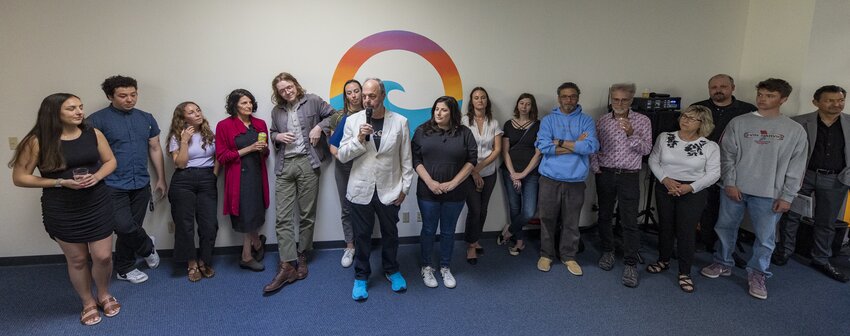
Lookout Local CEO Ken Doctor believes real estate is “a really important piece of the revival of local news.” The small nonprofit newsroom at Lookout Santa Cruz was awarded a Pulitzer Prize for Breaking News this spring for reporting on the devastating floods across their region.
Doctor was in the midst of finding a home for Lookout Santa Cruz when the pandemic hit in 2020. He said it made it “doubly difficult” to find a space, so they initially made do in a 1,000-square-foot space in a downtown museum. Today, they have a much larger space downtown, on the second floor of 1523 Pacific Avenue.
For Lookout Local, having a physical space is fundamental to their model.
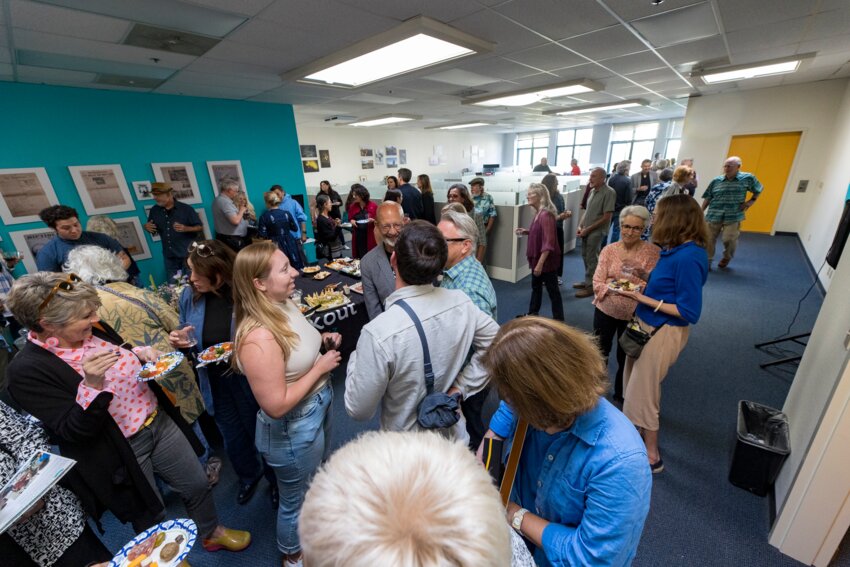
“This is a community newspaper that happens to be digital, and a community newspaper has to be accessible. It has to be seen. People need to be able to point to it,” Doctor said. He sees a newsroom as essential for quality journalism, as well.
“Newsrooms work best when journalists talk to each other. It’s the way you get information, test ideas and share sources — not staring into a computer or your smartphone all day,” he said.
Not only is the office well-suited for interaction among the staff, but it also accommodates special events for subscriber members and the broader community. Doctor estimates they can host up to 180 people. They held their first party to celebrate the Pulitzer.
“It wasn’t [members] celebrating for us; it was them celebrating with us,” Doctor said. “And it was incredible.”
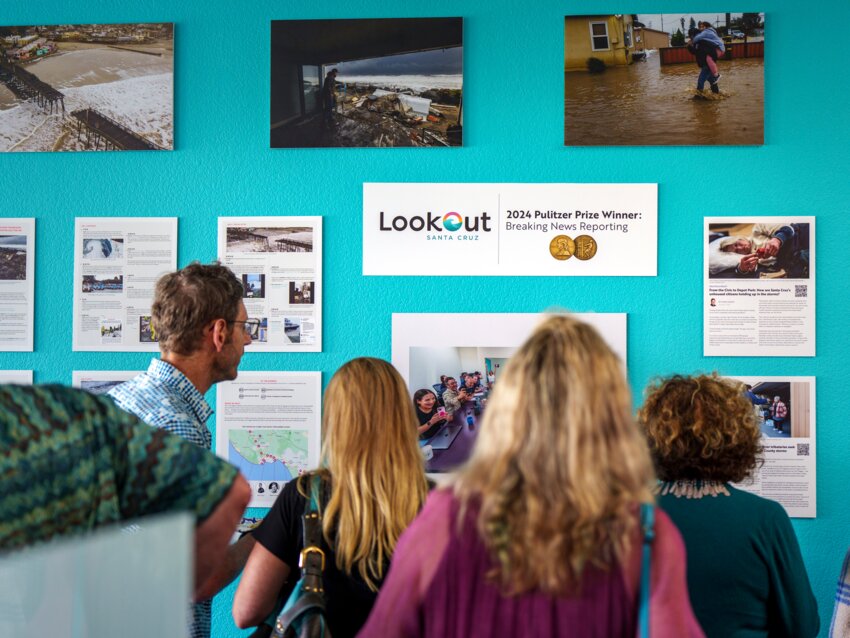
Since the Pulitzer party, they’ve hosted other events — wine-and-cheese events, networking events in partnership with the Chamber of Commerce and a reception for an author appearing at the bookstore across the street. They have plans to revive a “Lookout Listens” series, where they bring in leaders and residents to discuss community issues. They may have more informal gatherings, inviting the public to come in for coffee and conversation.
These events are free, but Doctor said revenue isn’t always linear. They know these events are driving retention and conversions.
They’ve dedicated two walls in the office to Santa Cruz history and their Pulitzer-winning reporting.
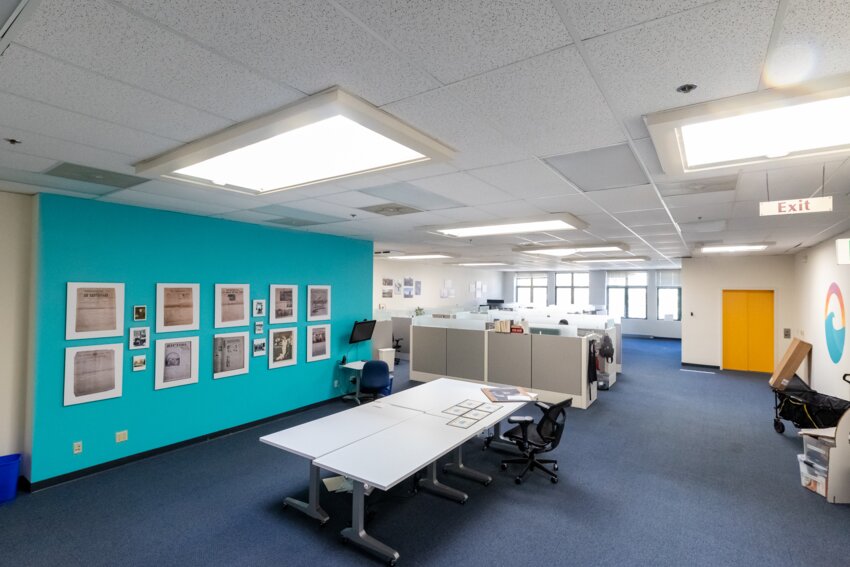
“For the history wall, we went to the local archive at the Museum of Art and History, and we picked out 12 front pages going back to the 1906 earthquake. In 1955, there was a big flood here. There was an earthquake in 1989 that changed Santa Cruz forever. So, we put these pages from other newspapers up on the wall, and then to the right of them, we installed a monitor with Lookout Santa Cruz. People can see the actual history of Santa Cruz through the press. And we’re saying we are trying to take on that mantle of being your trusted local news source, but it’s digital,” Doctor said.
Security for newsrooms is at the top of mind in today’s political climate, and having offices on the second floor provides a buffer from the street. Doctor said he struggles with having a fully open-door policy, and prefers scheduled events over walk-in traffic for now.
He is proud of their presence in town. He compared it to the Alden Global Capital-owned Santa Cruz Sentinel, a broadsheet daily founded in 1856. They owned and sold a building in town, relocating its newsroom to a distribution center.
Lookout Santa Cruz already has signage on the building, but he plans to add another more prominent sign and perhaps some neon to the window that simply reads, “Local News.”
Doctor said one thing that came out of the pandemic is a glut of available commercial real estate, so publishers can negotiate rental space or buy unoccupied buildings. He said Lookout Local spends about 5% of its monthly budget on rent and utilities.
And they’re expanding. Doctor is looking for commercial space in Eugene, Oregon. They hope to sign a lease by November 1st — just four years after Lookout Local’s launch.
“When we won the Pulitzer, I showed up at the office, and there was a woman out front with her arms full of a box of champagne. I’d met her once before. She said, ‘This is for your staff, for the Pulitzer.’ And I said, ‘Thank you.’ She said, ‘No, thank you for representing Santa Cruz.’ That still sticks with me,” Doctor said. “Newspapers at their best represent their cities.”
In Marfa, Texas, they’re building community
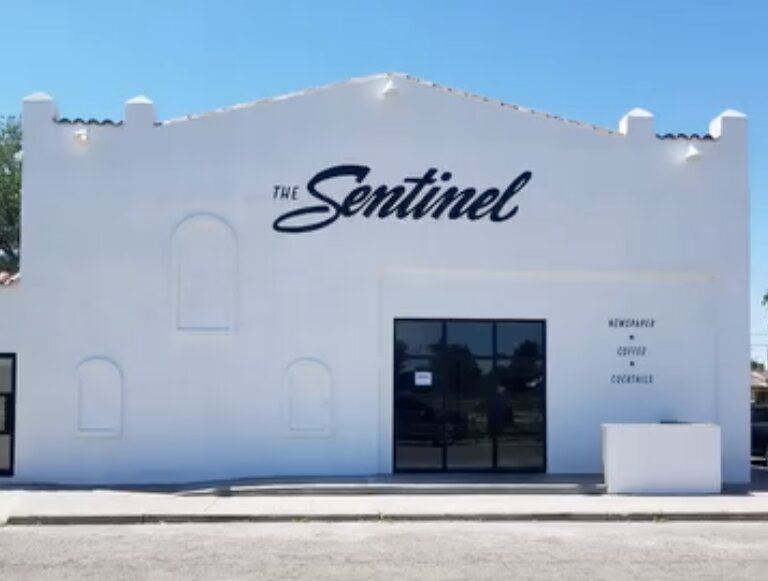
Max Kabat didn’t grow up in a family-owned newspaper business. He never worked in a newsroom. In other words, he’s not of that life. Instead, he made his professional mark in marketing and branding. But that’s given him the gift of sight — an objective view of the local news business.
Kabat is married to Maisie Crow, a documentary filmmaker and journalist. In 2016, they moved to the one-square-mile small town of Marfa, Texas, with a population of 1,788 (per the 2020 U.S. Census). They became friendly with the owners of the local newspaper. They learned they were retiring after 30 years of publishing The Big Bend Sentinel — a weekly that dates back to 1926 — and The Presidio International, the bilingual paper for communities along the border.
The building wasn’t part of the deal when Kabat and Crow bought the publishing enterprise. They were offered a lease but felt that being beholden to a landlord might imperil their plans. Instead, they sought a new space and landed at 209 West El Paso Street, just a block from the town's main drag.
“It’s a building that’s had many lives,” Kabat said. “It was a general store and horse stables. It was a funeral home. It was a West Texas dance hall and bar. It had been closed for a couple of years when we took over, bought the space and started reimagining it as something else.”
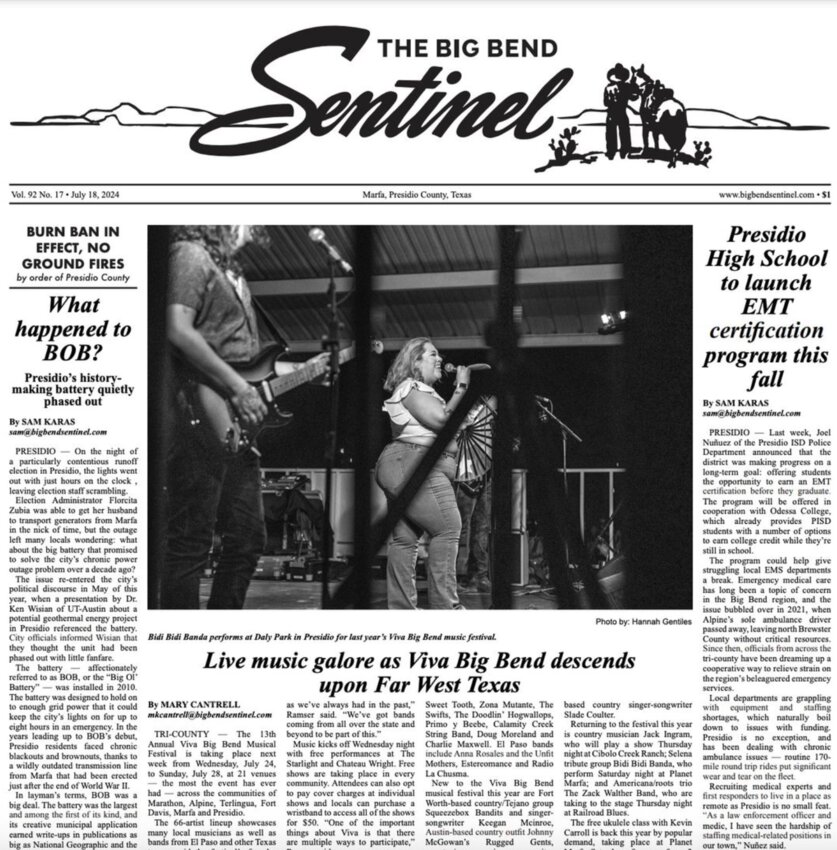
They expanded their newsroom and hired more reporters and operations personnel — about 20 full-time and part-time employees. Crow leads the newsroom as the editor-in-chief. In July 2019, they opened their doors and published their first editions.
The audience is made of up of two distinctive types of readers. There are locals who live there year-round and more transient readers who come to the region as part-time residents, second-home owners, tourists, or other visitors.
“The content we provide serves both audiences, and it’s all focused on what's happening here,” he stressed.
Owning and maintaining a building is expensive. Without fail, those costs go up over time. But Kabat isn’t particularly daunted by that. “I think that’s just called ‘America.’ All those costs go up. … It’s the cost of doing business,” he said.
He knows this has caused other local news publishers to close down newsrooms, consolidate operations, sell off their buildings and essentially abandon the communities they serve. Kabat thinks that’s unimaginative and tragic.
“If you continue to look at this as just a piece of real estate, as just overhead, instead of as a possibility or a way to make money, then, of course, you’re going to sell the building or let it die,” he said.
“It doesn’t have to be that way,” he added.
Local news’ strength is that it can “build community,” and that’s core to their mission, so Kabat and Crow pondered how to make their building deliver on that promise and make a little extra money to boot. They decided to open a café, The Sentinel. It’s next to the newspaper offices but has a separate street-level entrance. People come in, enjoy a cup of coffee, a cocktail and crave-worthy culinary creations. They pick up their paper and spend time with friends, neighbors and the newspapers’ staff.
“There are a lot of communal tables. It’s a very open plan. There isn’t the opportunity for people to really sit by themselves. We wanted people to sit together, so we put in couches, too. It’s all intentional,” he explained.
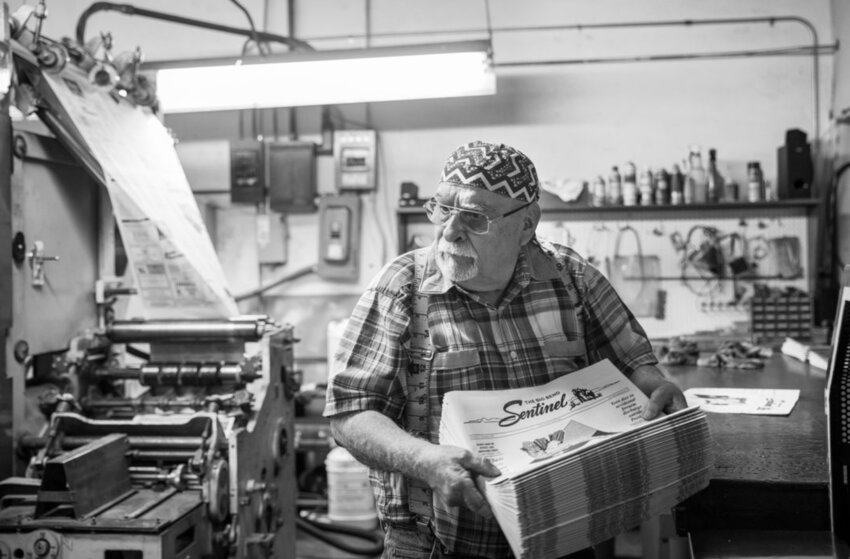
In keeping with the “building community” theme, they also rent out some of their facility for special occasions. They've hosted weddings, rehearsal dinners, dance parties, a high school prom and an adult prom. They’ve had live music concerts, speaker series and even a celebrity chef’s residency. Some of their clients manage the event coordination themselves, but if they need help with that, the staff is poised to step in and bring the event to life.
Kabat thinks of these revenue generators as ways to support the essential work — journalism.
“Newsrooms used to be these things that happened behind closed doors. You couldn’t see how the cake was baked. You couldn’t be part of it. The newspaper just talked at people,” Kabat observed. “I think this industry has really struggled with that. Talking at people doesn’t work. You have to speak with them. You have to make them a part of the conversation.”
Now that they’ve created a lucrative enterprise by appending the newspapers with the café and event space, they’re preparing to help other local news outlets replicate that model or conceive of their own. Kabat has created a playbook and plans to launch a consultancy that helps local news publishers think like entrepreneurs.
“What a wonderful time [to be in local news],” Kabat said. “We have all this interest from foundations that want to help. What a wonderful time to want to — and try to — do something different.”
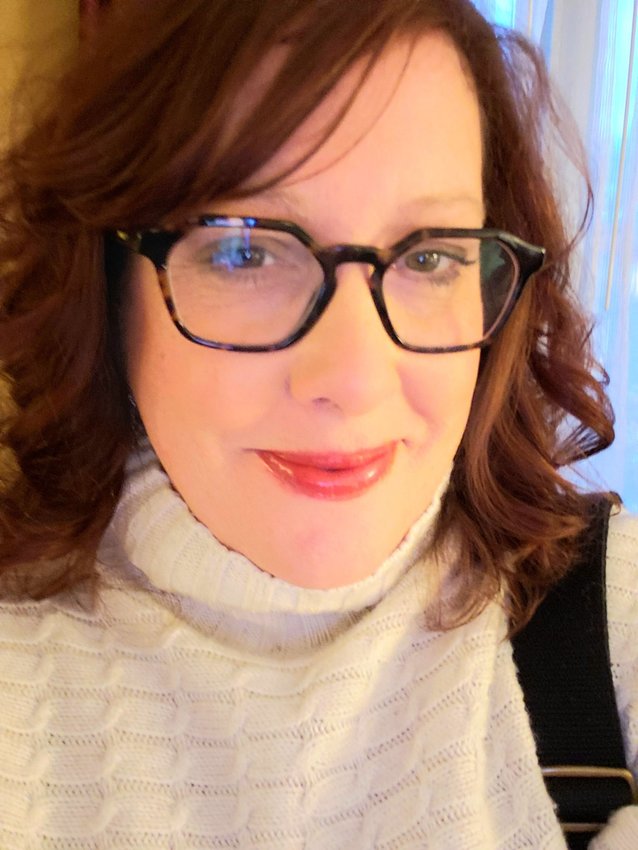 Gretchen A. Peck is a contributing editor to Editor & Publisher. She's reported for E&P since 2010 and welcomes comments at gretchenapeck@gmail.com.
Gretchen A. Peck is a contributing editor to Editor & Publisher. She's reported for E&P since 2010 and welcomes comments at gretchenapeck@gmail.com.
Comments
No comments on this item Please log in to comment by clicking here